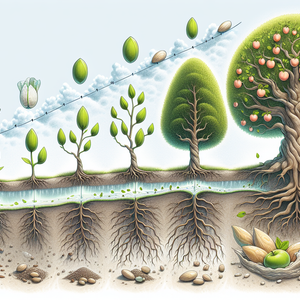Breaking Into UX/UI: The Unconventional Pathways to Your First Job

The proliferation of online learning platforms has made it easier than ever for aspiring designers to acquire the skills they need. Programs like Coursera, Udemy, and specialized bootcamps such as General Assembly and Springboard offer comprehensive courses in UX/UI design. These courses often blend theoretical knowledge with practical applications, allowing students to build a robust skill set in a fraction of the time it would take in a traditional university setting. For instance, Sarah, a former marketing professional, transitioned into UX design by completing a six-month bootcamp. She rapidly built her portfolio by working on real client projects, which ultimately led her to her first role at a tech startup. This transformation illustrates that structured online learning can effectively bridge the gap for individuals looking to switch careers.
Self-Taught Projects
Self-initiated projects serve as a powerful tool for aspiring designers to hone their skills and create a portfolio that reflects their unique style. Many successful designers have leveraged personal projects to showcase their creativity and problem-solving capabilities. Take the example of Mark, who, despite having no formal training, spent a year redesigning an existing app as a passion project. He documented his process on social media, which caught the attention of a recruiter who was impressed by his initiative and creativity. Mark's story illustrates how self-directed learning can lead to unexpected opportunities. By showcasing a well-thought-out design process, he demonstrated not just skills but also the ability to communicate effectively about design.
Community Involvement
Engaging with the design community can open doors that education alone may not. Many designers find success by participating in local meetups, hackathons, or online forums. These environments provide valuable networking opportunities and allow aspiring designers to collaborate with others, share ideas, and gain feedback on their work. For example, Lisa joined a local UX design group and participated in a hackathon, where she teamed up with developers to create a prototype for a non-profit organization. The connections she made during this event not only expanded her network but also led to her first job offer from a company that admired her teamwork and innovative approach. Community involvement not only enhances learning but also creates a supportive environment for aspiring designers.
Success Stories of Non-Traditional Designers
The landscape is filled with stories of individuals who have succeeded without following the traditional educational path. For instance, David was a barista before discovering his passion for design through a free online course. He dedicated his evenings to learning and building his portfolio through volunteer work for local charities. His persistence paid off when he secured a junior designer position with a well-known design agency. David’s story exemplifies that with determination and resourcefulness, anyone can break into the UX/UI field. These success stories underscore a crucial point: the UX/UI industry values skills, creativity, and a willingness to learn over formal qualifications. Many employers are increasingly prioritizing portfolios and practical experience, making unconventional pathways more viable than ever.
Breaking into the UX/UI design field without a traditional degree is not only possible, but it is also increasingly common. By taking advantage of online courses, engaging in self-directed projects, and actively participating in the design community, aspiring designers can carve out their own unique pathways to success. The stories of individuals like Sarah, Mark, Lisa, and David serve as a testament to the power of passion, creativity, and community. As the industry continues to evolve, it is clear that the traits of adaptability and resilience will be the keys to unlocking new opportunities in the UX/UI landscape. Whether you are just starting out or considering a career change, remember that your journey is uniquely yours, and the possibilities are endless. The UX/UI field is ripe with potential for those willing to take the unconventional route, proving that formal education is not the only gateway to a rewarding career in design.
UX Researcher
Google, Amazon, user-centered design agencies
Responsibilities
Conduct user interviews, surveys, and usability tests to gather insights about user needs and behaviors.
Analyze qualitative and quantitative data to inform design decisions and improve user experience.
Collaborate with UX/UI designers and product teams to translate research findings into actionable recommendations.
Skills Required
Strong analytical skills
Proficiency in research methods
Familiarity with tools like UserTesting or Lookback
UI Designer
Adobe, Spotify, e-commerce platforms like Shopify
Responsibilities
Create visually appealing and user-friendly interfaces based on established design principles and brand guidelines.
Develop wireframes, prototypes, and high-fidelity mockups to communicate design concepts effectively.
Stay updated on design trends and technologies to keep the interface engaging and innovative.
Skills Required
Proficiency in design software (e.g., Sketch, Figma, Adobe XD)
Understanding of typography and color theory
A solid portfolio showcasing interactive designs
Interaction Designer
Microsoft, Square, startups in tech and finance
Responsibilities
Focus on enhancing user interaction with products by designing smooth and intuitive workflows.
Create detailed interaction specifications and animations to demonstrate how users will engage with the interface.
Work closely with developers to ensure the design is implemented accurately and efficiently.
Skills Required
Expertise in prototyping tools (e.g., InVision, Axure)
Knowledge of user-centered design principles
Understanding of front-end development basics
Product Designer
Apple, Facebook, tech startups
Responsibilities
Oversee the entire product design process, from initial research to final implementation, ensuring a cohesive user experience.
Collaborate with cross-functional teams, including engineering and marketing, to define product vision and strategy.
Utilize design thinking methodologies to solve complex problems and create innovative solutions.
Skills Required
Strong project management abilities
Proficiency in both UX and UI design
Experience with Agile methodologies
UX/UI Design Intern
Large tech firms, design agencies, media companies
Responsibilities
Assist senior designers in creating user personas, user journeys, and interface designs for various projects.
Conduct competitive analyses and gather user feedback to inform design iterations.
Participate in brainstorming sessions and contribute ideas for enhancing product usability.
Skills Required
Basic knowledge of design tools (e.g., Figma, Adobe Creative Suite)
Strong communication skills
A portfolio demonstrating a passion for design through personal projects or coursework


